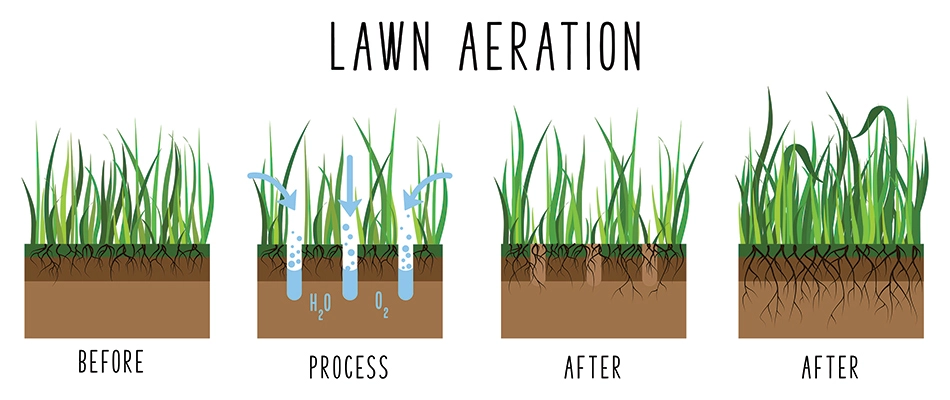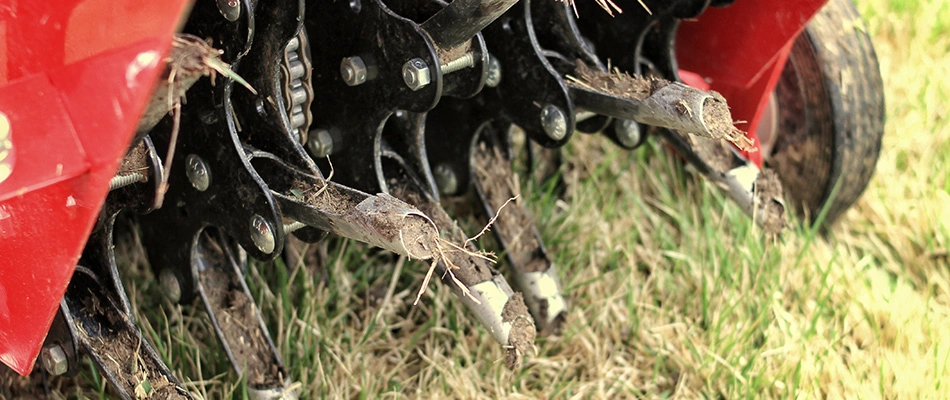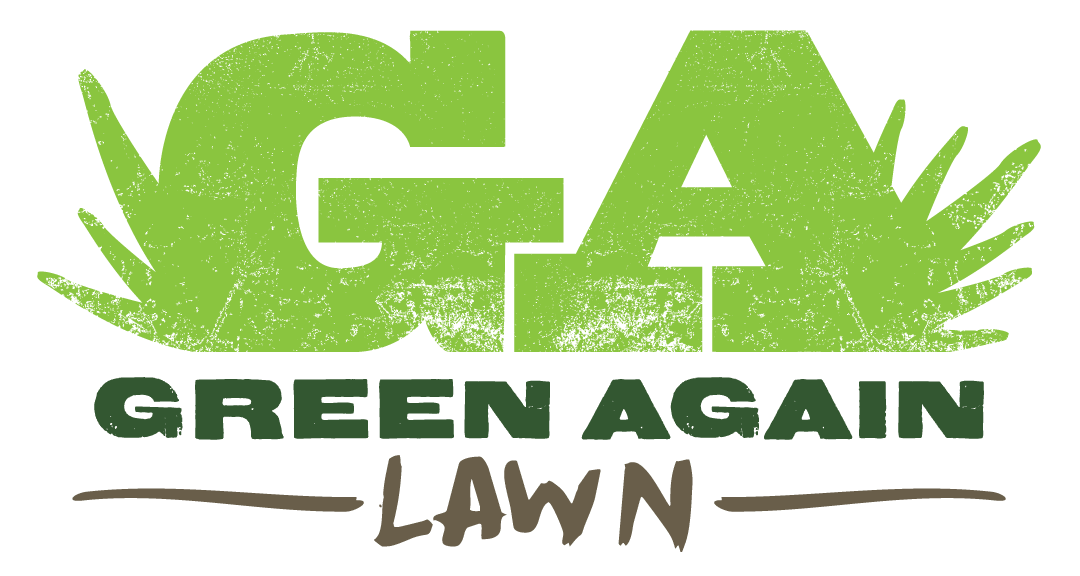Aeration is a critical lawn care service that relieves soil compaction on your property and makes it easier for water, nutrients, and other key resources to reach the roots of your grass. You can aerate your lawn using 1 of 2 methods: liquid aeration or core aeration. In Indiana, core aeration is the way to go to maximize the impact on your lawn. This process involves mechanically removing soil plugs, or cores, from your turf to create tiny passageways that help your lawn breathe easier.
To ensure the best results, core aeration is a service that should be completed annually in the fall. Core aerating your lawn strengthens your grass, boosts its health, and increases its ability to withstand stress. If you want your lawn to reach its full potential, then you should not let the fall pass you by without scheduling an aeration service. Continue reading our blog to learn more!
What are the benefits of core aeration?

Core aeration is a lawn care service that provides many benefits to your grass. The primary goal of this service is to relieve soil compaction on your property. When soil becomes compacted, it restricts the flow of water, sunlight, oxygen, and nutrients to the roots of your grass. With limited access to these vital resources, your lawn will have a harder time reaching its full potential. Core aeration reduces compaction by creating thousands of tiny passageways in your soil through which resources can travel. This enhances the access the roots of your grass have to these important resources and helps your lawn flourish.
Why should you schedule core aeration in the fall?

Core aeration is a lawn care service that you should always schedule in the fall. This is the case for a couple of reasons. First, the soil under your lawn is rarely more compact than it is after the summer. Many lawns experience the most usage in the summer months and become hardened due to heavy foot and vehicle traffic. By the time summer ends, your lawn is in need of compaction relief.
Additionally, you should schedule core aeration in the fall because it is the time of year when your grass is strong enough to withstand the process. Core aeration is a mildly invasive service that involves using a machine to remove thousands of small soil plugs, or cores, from your lawn. While core aeration will not harm your grass, it is best to perform this service when your lawn is strong and the weather conditions are favorable to a speedy recovery.
You should have your lawn core aerated in September or early October to ensure the best results.
Core aeration strengthens your lawn so it can naturally resist stressors.

Core aeration is a service that ultimately exists to help your lawn become stronger and healthier so that it can naturally resist stressors. These stressors include lawn diseases, insect infestations, and weeds — all of which threaten the health of your turf. A strong lawn bolstered by core aeration will be better equipped to stave off these threats and stay in top condition. This is especially important as your lawn enters the winter season, which can take a heavy toll on your grass if it is already weakened from the fall.
Sign up for our core aeration service today!
Do you want to set your lawn up for success? If so, then don't skip out on core aeration. We provide our core aeration service to residential, commercial, and HOA property owners in Greenfield, Fishers, Fortville, and nearby areas of Indiana. Our team performs double-pass core aeration using a commercial-grade aerator that removes 3- to 4-inch plugs from your soil. This service is available annually from September 1st to October 15th and is offered independently of our other service offerings. However, we do recommend that you schedule it in conjunction with overseeding to achieve the best outcome. If you're ready to get started, call us at 317-417-0146 to sign up today!




Comments (0)
Thanks for your comment!
Thanks for your feedback! Your comments have been successfully submitted! Please note, all comments require admin approval prior to display.
Error submitting comment!
There is a problem with your comment, please see below and try again.